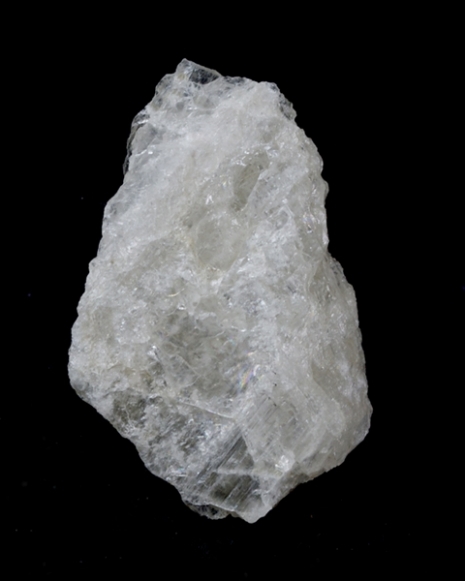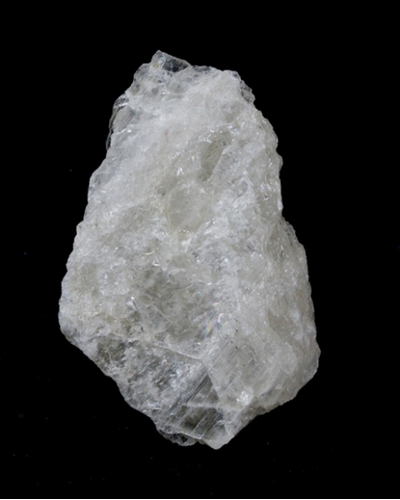Darapskite
A valid IMA mineral species - grandfathered
This page is currently not sponsored. Click here to sponsor this page.
About Darapskite
Formula:
Na3(SO4)(NO3) · H2O
Colour:
Colourless
Lustre:
Vitreous
Hardness:
2½
Specific Gravity:
2.201
Crystal System:
Monoclinic
Name:
Named in honor of Ludwig Darapsky (1857–1916), German–Chilean chemist and mineralogist, Santiago, Chile.
Often occurs in cavities or crevices in massive nitrate rock or as a surficial concentration (Chile).
Unique Identifiers
Mindat ID:
1226
Long-form identifier:
mindat:1:1:1226:9
GUID
(UUID V4):
(UUID V4):
2ab56559-96b8-42c4-89fc-6e903c4d047c
IMA Classification of Darapskite
Approved, 'Grandfathered' (first described prior to 1959)
First published:
1891
Type description reference:
Classification of Darapskite
7.DG.05
7 : SULFATES (selenates, tellurates, chromates, molybdates, wolframates)
D : Sulfates (selenates, etc.) with additional anions, with H2O
G : With large and medium-sized cations; with NO3, CO3, B(OH)4, SiO4 or IO3
7 : SULFATES (selenates, tellurates, chromates, molybdates, wolframates)
D : Sulfates (selenates, etc.) with additional anions, with H2O
G : With large and medium-sized cations; with NO3, CO3, B(OH)4, SiO4 or IO3
Dana 7th ed.:
20.1.1.1
20.1.1.1
20 : COMPOUND NITRATES
1 : Miscellaneous
20 : COMPOUND NITRATES
1 : Miscellaneous
13.9
13 : Nitrates
13 : Nitrates
Mineral Symbols
As of 2021 there are now IMA–CNMNC approved mineral symbols (abbreviations) for each mineral species, useful for tables and diagrams.
| Symbol | Source | Reference |
|---|---|---|
| Drp | IMA–CNMNC | Warr, L.N. (2021). IMA–CNMNC approved mineral symbols. Mineralogical Magazine, 85(3), 291-320. doi:10.1180/mgm.2021.43 |
Physical Properties of Darapskite
Vitreous
Transparency:
Transparent
Colour:
Colourless
Streak:
White
Hardness:
2½ on Mohs scale
Tenacity:
Brittle
Cleavage:
Perfect
On {010}. Also perfect cleavage on {100} (may be a parting).
On {010}. Also perfect cleavage on {100} (may be a parting).
Fracture:
Irregular/Uneven
Density:
2.201(5) g/cm3 (Measured) 2.202 g/cm3 (Calculated)
Optical Data of Darapskite
Type:
Biaxial (-)
RI values:
nα = 1.388 nβ = 1.479 nγ = 1.486
2V:
Measured: 26° to 28°, Calculated: 28°
Max Birefringence:
δ = 0.098

Image shows birefringence interference colour range (at 30µm thickness)
and does not take into account mineral colouration.
and does not take into account mineral colouration.
Surface Relief:
Moderate
Dispersion:
r > v rather strong
Chemistry of Darapskite
Mindat Formula:
Na3(SO4)(NO3) · H2O
Crystallography of Darapskite
Crystal System:
Monoclinic
Class (H-M):
2/m - Prismatic
Space Group:
P21/m
Setting:
P21/m
Cell Parameters:
a = 10.57 Å, b = 6.91 Å, c = 5.18 Å
β = 102.77°
β = 102.77°
Ratio:
a:b:c = 1.53 : 1 : 0.75
Unit Cell V:
368.98 ų (Calculated from Unit Cell)
Z:
2
Morphology:
Crystals tabular {100}, and pseudo-tetragonal [100].
Twinning:
Common on {100}. Re-entrant angles on the edges and composition face {100}. Polysynthetic at times.
Crystal Structure
Load
Unit Cell | Unit Cell Packed
2x2x2 | 3x3x3 | 4x4x4
Unit Cell | Unit Cell Packed
2x2x2 | 3x3x3 | 4x4x4
Show
Big Balls | Small Balls | Just Balls | Spacefill
Polyhedra Off | Si Polyhedra | All Polyhedra
Remove metal-metal sticks
Big Balls | Small Balls | Just Balls | Spacefill
Polyhedra Off | Si Polyhedra | All Polyhedra
Remove metal-metal sticks
Display Options
Black Background | White Background
Perspective On | Perspective Off
2D | Stereo | Red-Blue | Red-Cyan
Black Background | White Background
Perspective On | Perspective Off
2D | Stereo | Red-Blue | Red-Cyan
View
CIF File Best | x | y | z | a | b | c
CIF File Best | x | y | z | a | b | c
Rotation
Stop | Start
Stop | Start
Labels
Console Off | On | Grey | Yellow
Console Off | On | Grey | Yellow
Data courtesy of the American Mineralogist Crystal Structure Database. Click on an AMCSD ID to view structure
| ID | Species | Reference | Link | Year | Locality | Pressure (GPa) | Temp (K) |
|---|---|---|---|---|---|---|---|
| 0012051 | Darapskite | Sabelli C (1967) La struttura della darapskite Atti della Accademia Nazionale dei Lincei 42 874-887 | 1967 | 0 | 293 |
CIF Raw Data - click here to close
X-Ray Powder Diffraction
Powder Diffraction Data:
| d-spacing | Intensity |
|---|---|
| 10.29 Å | (100) |
| 3.456 Å | (35) |
| 2.865 Å | (35) |
| 2.594 Å | (30) |
| 4.13 Å | (25) |
| 3.522 Å | (25) |
| 3.266 Å | (18) |
Geological Environment
Paragenetic Mode(s):
| Paragenetic Mode | Earliest Age (Ga) |
|---|---|
| Near-surface Processes | |
| 21 : Chemically precipitated carbonate, phosphate, iron formations | |
| 25 : Evaporites (prebiotic) | |
| Stage 10a: Neoproterozoic oxygenation/terrestrial biosphere | <0.6 |
| 52 : Guano- and urine-derived minerals | <0.4 |
Geological Setting:
Nitrate deposits rich in sulfates.
Type Occurrence of Darapskite
General Appearance of Type Material:
Large quantities of colorless square panels.
Place of Conservation of Type Material:
Mineralogisches Museum, Universität Hamburg, Hamburg, Germany (type?).
Geological Setting of Type Material:
Arid sulfate deposit.
Associated Minerals at Type Locality:
Reference:
Dietze (1891) Zeitschrift für Kristallographie, Mineralogie und Petrographie, Leipzig: 19: 445.
Other Language Names for Darapskite
Common Associates
Associated Minerals Based on Photo Data:
Related Minerals - Strunz-mindat Grouping
| 7.DG. | Mathesiusite | K5(UO2)4(SO4)4(VO5) · 4H2O |
| 7.DG.10 | Clinoungemachite | (Na, K, Fe, SO4) |
| 7.DG.10 | Humberstonite | Na7K3Mg2(SO4)6(NO3)2 · 6H2O |
| 7.DG.10 | Ungemachite | K3Na8Fe(SO4)6(NO3)2 · 6H2O |
| 7.DG.15 | Bentorite | Ca6Cr2(SO4)3(OH)12 · 26H2O |
| 7.DG.15 | Charlesite | Ca6(Al,Si)2(SO4)2[B(OH)4](OH,O)12 · 26H2O |
| 7.DG.15 | Ettringite | Ca6Al2(SO4)3(OH)12 · 26H2O |
| 7.DG.15 | Jouravskite | Ca3Mn4+(SO4)(CO3)(OH)6 · 12H2O |
| 7.DG.15 | Sturmanite | Ca6Fe3+2(SO4)2.5[B(OH)4](OH)12 · 25H2O |
| 7.DG.15 | Thaumasite | Ca3(SO4)[Si(OH)6](CO3) · 12H2O |
| 7.DG.15 | Carraraite | Ca3(SO4)[Ge(OH)6](CO3) · 12H2O |
| 7.DG.15 | Buryatite | Ca3(Si,Fe3+,Al)(SO4)B(OH)4(OH,O)6 · 12H2O |
| 7.DG.15 | Birunite | Ca18(SiO3)8.5(CO3)8.5SO4 · 15H2O(?) |
| 7.DG.15 | Hielscherite | Ca3Si(SO4)(SO3)(OH)6 · 11H2O |
| 7.DG.15 | Kottenheimite | Ca 3Si(SO4)2(OH)6 · 12H2O |
| 7.DG.15 | Imayoshiite | Ca3Al(CO3)[B(OH)4](OH)6 · 12H2O |
| 7.DG.15 | Tatarinovite | Ca3Al(SO4)[B(OH)4](OH)6 · 12H2O |
| 7.DG.15 | Siwaqaite | Ca6Al2(CrO4)3(OH)12 · 26H2O |
| 7.DG.15 | Chiyokoite | Ca3Si(CO3)[B(OH)4]O (OH)5 · 12H2O |
| 7.DG.20 | Rapidcreekite | Ca2(SO4)(CO3) · 4H2O |
| 7.DG.25 | Tatarskite | Ca6Mg2(SO4)2(CO3)2(OH)4Cl4 · 7H2O |
| 7.DG.30 | Nakauriite | Cu8(SO4)4(CO3)(OH)6 · 48H2O |
| 7.DG.35 | Chessexite | (Na,K)4Ca2(Mg,Zn)3Al8(SO4)10(SiO4)2 · 40H2O |
| 7.DG.40 | Carlosruizite | K6(Na,K)4Na6Mg10(SeO4)12(IO3)12 · 12H2O |
| 7.DG.40 | Fuenzalidaite | K6(Na,K)4Na6Mg10(SO4)12(IO3)12 · 12H2O |
| 7.DG.45 | Chelyabinskite | (Ca,Mg)3(SO4,CO3)2[Si(OH)6] · 9H2O (?) |
| 7.DG.55 | Ramazzoite | [Mg8Cu12(PO4)(CO3)4(OH)24(H2O)20][(H0.33SO4)3(H2O)36] |
| 7.DG.60 | Witzkeite | Na4K4Ca(NO3)2(SO4)4 · 2H2O |
Other Information
Thermal Behaviour:
When heated, gives off water without decrepitation.
Notes:
Readily soluble in water.
Health Risks:
No information on health risks for this material has been entered into the database. You should always treat mineral specimens with care.
Internet Links for Darapskite
mindat.org URL:
https://www.mindat.org/min-1226.html
Please feel free to link to this page.
Please feel free to link to this page.
Search Engines:
External Links:
Mineral Dealers:
References for Darapskite
Reference List:
Larsen, Esper S. (1921) The microscopic determination of the nonopaque minerals. Bulletin Vol. 679. US Geological Survey doi:10.3133/b679 p.66
Mrose, Mary E., Ericksen, George E. (1970) Mineralogical studies of the nitrate deposits of Chile I. The identity of nitroglauberite with darapskite. American Mineralogist, 55 (5-6). 776-783
Localities for Darapskite
Locality List
 - This locality has map coordinates listed.
- This locality has map coordinates listed.
 - This locality has estimated coordinates.
ⓘ - Click for references and further information on this occurrence.
? - Indicates mineral may be doubtful at this locality.
- This locality has estimated coordinates.
ⓘ - Click for references and further information on this occurrence.
? - Indicates mineral may be doubtful at this locality.
 - Good crystals or important locality for species.
- Good crystals or important locality for species.
 - World class for species or very significant.
(TL) - Type Locality for a valid mineral species.
(FRL) - First Recorded Locality for everything else (eg varieties).
- World class for species or very significant.
(TL) - Type Locality for a valid mineral species.
(FRL) - First Recorded Locality for everything else (eg varieties).
All localities listed without proper references should be considered as questionable.
Antarctica | |
| |
| |
| |
Bahamas | |
| |
Chile | |
| Ericksen, George E., Mrose, Mary E. (1970) Mineralogical studies of the nitrate deposits of Chile. II. Darapskite,. American Mineralogist, 55 (9-10). 1500-1517 Konnert, Judith A., Evans, Howard T., Jr.,, Mcgee, James J., Ericksen, George E. (1994) Mineralogical studies of the nitrate deposits of Chile: VII. Two new saline minerals with the composition K6(Na,K)4Na6Mg10(XO4)12(IO3)12 · 12H2O: Fuenzalidaite (X = S) and carlosruizite (X = Se) American Mineralogist, 79 (9-10) 1003-1008 |
| |
| |
| |
| |
| |
| |
| Konnert, Judith A., Evans, Howard T., Jr.,, Mcgee, James J., Ericksen, George E. (1994) Mineralogical studies of the nitrate deposits of Chile: VII. Two new saline minerals with the composition K6(Na,K)4Na6Mg10(XO4)12(IO3)12 · 12H2O: Fuenzalidaite (X = S) and carlosruizite (X = Se) American Mineralogist, 79 (9-10) 1003-1008 |
| |
| |
China | |
| |
| |
| |
Romania | |
| |
USA | |
| |
| |
| |
| |
|
Quick NavTopAbout DarapskiteUnique IdentifiersIMA Classification Classification Mineral SymbolsPhysical Properties Optical Data Chemistry Crystallography Crystal StructureX-Ray Powder DiffractionGeological EnvironmentType Occurrence Other LanguagesCommon AssociatesStrunz-MindatOther InformationInternet Links References Localities Locality List





 symbol to view information about a locality.
The
symbol to view information about a locality.
The 



Iquique, Iquique Province, Tarapacá, Chile